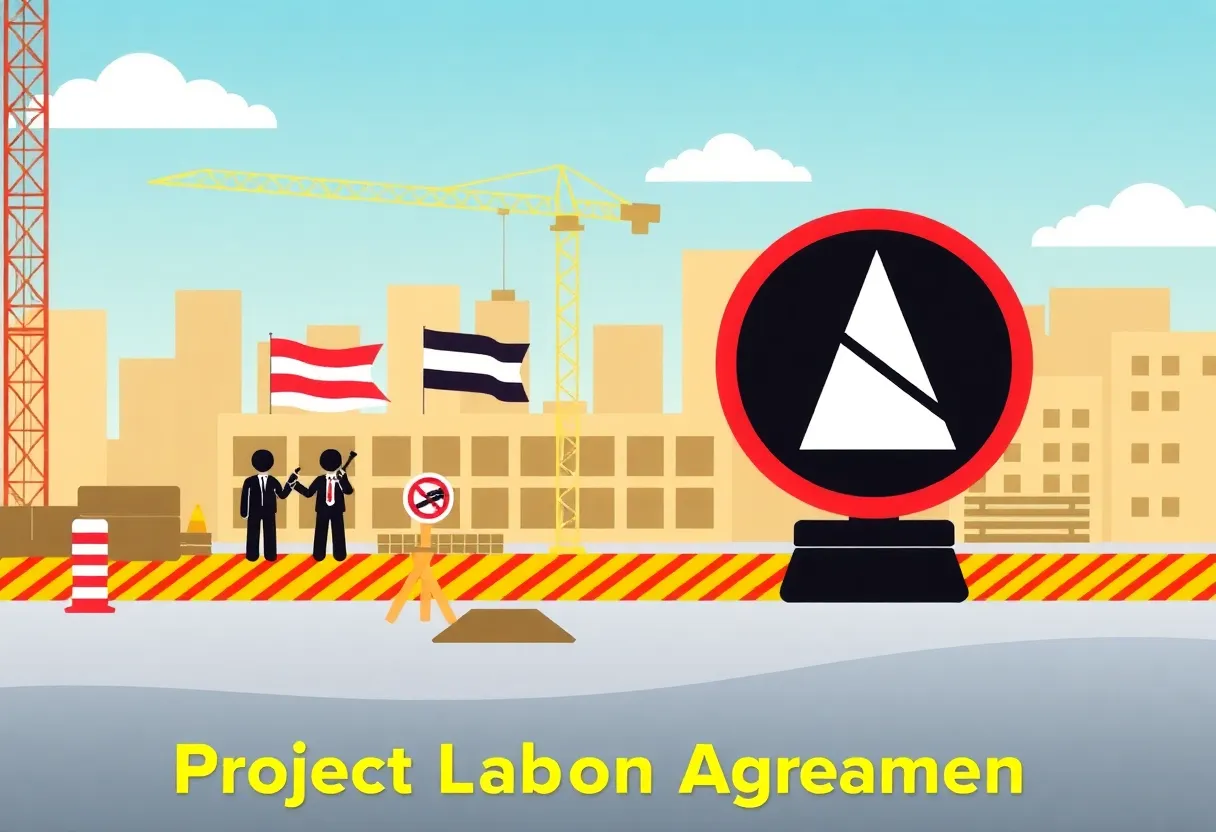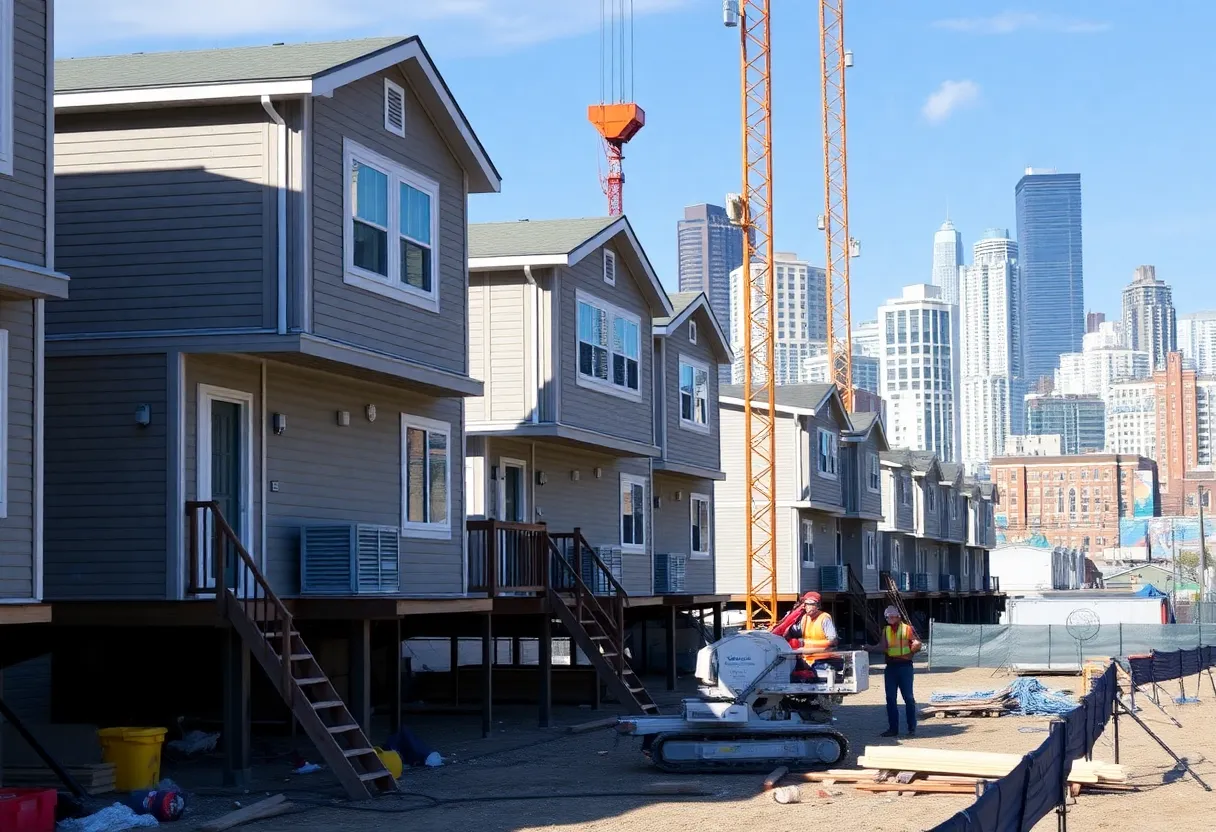News Summary
Project Labor Agreements (PLAs) are under scrutiny as the Biden administration mandates them for federal construction projects exceeding $35 million. Critics argue that these agreements hinder non-union contractors, affecting competitive bidding. Ongoing legal challenges in the 11th Circuit Court question the legality of the PLAs, with varying state support complicating the hiring process and potentially impacting workforce diversity. The future of PLAs and their implications for the construction industry remain uncertain as stakeholders monitor the evolving legal landscape.
Legal Challenges Surround Project Labor Agreements on Federal Construction Projects
Legal issues are looming over Project Labor Agreements (PLAs) as the Biden administration faces opposition to its requirements for federal construction projects exceeding $35 million. Implemented through an executive order and now part of federal regulations, these agreements mandate that all contractors must comply with union collective bargaining arrangements, raising concerns throughout the contracting community.
The primary aim of PLAs is to ensure that workers on federal projects are union-affiliated. This directive significantly impacts the competitive bidding process, as it limits the pool of bids to only those from contractors who agree to the PLA. Critics of this policy argue that it distorts competition by effectively excluding non-union contractors and their employees from bidding on federal projects.
Opponents of the PLA requirement highlight the potential consequences for non-union workers. These individuals may be deprived of various benefits associated with union agreements, such as pension vesting. Furthermore, non-union workers might find themselves obligated to pay union dues and rely on union hiring halls for employment opportunities, which can further complicate their chances of securing work on these large projects.
The status of PLAs varies significantly across the United States. Some states have taken a definitive stance against government-mandated PLAs, while others endorse them. This patchwork of legal standards adds a layer of complexity to the ongoing debates surrounding the Biden administration’s PLA regulations.
Legal challenges against the administration’s PLA policies are currently in progress, with numerous cases being litigated in the 11th Circuit Court of Appeals. The National Right to Work Foundation has filed an amicus brief that supports these challenges, alleging that PLAs infringe on first amendment rights and violate the National Labor Relations Act. The overall legality of the PLA requirement remains uncertain, especially after a recent district court suggested the regulations might be illegal. However, the court opted not to block the PLA’s implementation while additional legal reviews are taking place.
Contracting agencies have encountered several challenges related to the mandatory PLA requirement when attempting to award contracts. A prior court ruling that invalidated the removal of PLA obligations in specific scenarios has complicated matters. Though the Biden administration is actively working to enforce the PLA, a recent federal judge’s decision favored contractors opposing the mandate, asserting that the PLA limits competitive bidding.
Historically, the PLA issue is not new to the construction industry. The previous Trump administration issued guidance that favored the use of PLAs, but it faced significant pushback from industry groups that contended these agreements inflate project costs. Proponents of PLAs argue that they can enhance competition and reduce overall project costs. In fact, a recent study from Illinois has suggested that PLAs may have positive effects on competition and cost efficiency in public construction projects, opposing the claims made by their critics.
As the litigation unfolds and guidance from the White House evolves, the future of how PLAs will be implemented in federal construction projects remains uncertain. Stakeholders across the construction industry will undoubtedly be monitoring these developments closely, as they carry significant implications for how projects are managed and contracted moving forward.
In conclusion, the ongoing legal battles surrounding Project Labor Agreements highlight a significant divide within the construction industry regarding union involvement and competition. With various states adopting different positions on PLAs, and the growing tension between advocacy groups, the landscape of federal construction projects may undergo substantial changes in the coming months.
Deeper Dive: News & Info About This Topic
Additional Resources
- Federal News Network: PLAs and Federal Construction Projects
- ENR: Trump Administration and Project Labor Agreements
- Capitol News Illinois: PLAs Lower Costs and Boost Competition
- ECMWeb: Affirmation of Federal PLA Rule
- Encyclopedia Britannica: Project Labor Agreements
Author: Construction NY News
NEW YORK STAFF WRITER The NEW YORK STAFF WRITER represents the experienced team at constructionnynews.com, your go-to source for actionable local news and information in New York and beyond. Specializing in "news you can use," we cover essential topics like product reviews for personal and business needs, local business directories, politics, real estate trends, neighborhood insights, and state news affecting the area—with deep expertise drawn from years of dedicated reporting and strong community input, including local press releases and business updates. We deliver top reporting on high-value events such as the New York Build Expo, infrastructure breakthroughs, and cutting-edge construction technology showcases. Our coverage extends to key organizations like the Associated General Contractors of New York State and the Building Trades Employers' Association, plus leading businesses in construction and real estate that power the local economy such as Turner Construction Company and CMiC Global. As part of the broader network, including constructioncanews.com, constructiontxnews.com, and constructionflnews.com, we provide comprehensive, credible insights into the dynamic construction landscape across multiple states.





